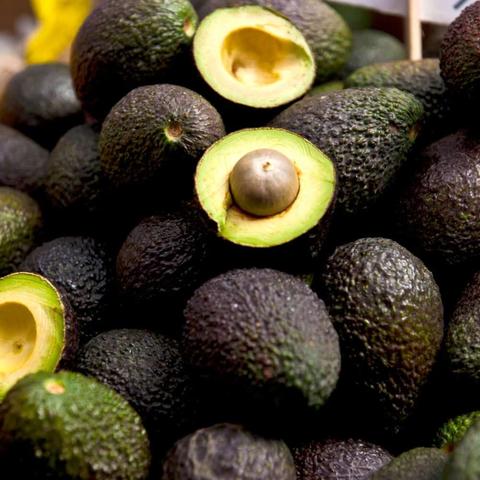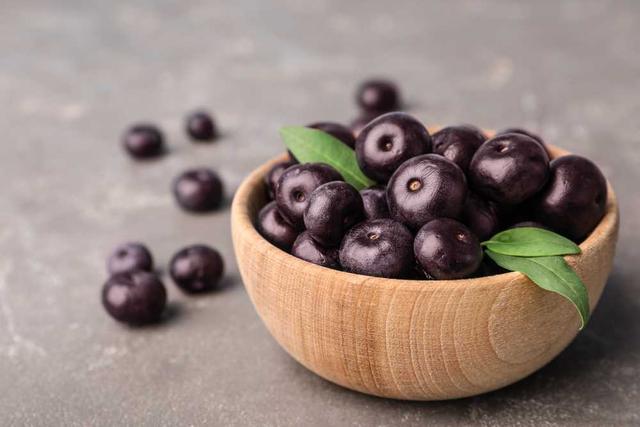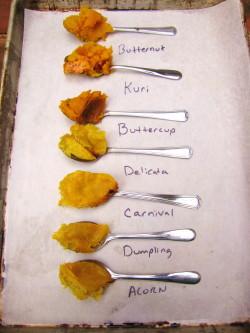
Discover the delectable taste of acorn squash! Curious about its flavor profile? Dive into this comprehensive guide to find out what makes this versatile veggie a culinary delight. From its sweet and nutty undertones to its tender flesh, learn why acorn squash is a must-try addition to your next meal.
Exploring the Mild and Nutty Flavor of Acorn Squash
Acorn squash is known for its mild and nutty flavor, making it a versatile ingredient in various dishes. Its taste is milder compared to butternut squash and has a slightly fibrous texture. The sweet and nutty flavor of acorn squash is complemented by the watery character of its flesh.

Despite its unique taste, acorn squash can be substituted with other members of the squash family such as Hubbard or butternut squash. Pumpkin can also serve as an alternative in recipes that call for acorn squash.
In addition to its delicious taste, acorn squash offers numerous nutritional benefits. One cup of cubed raw acorn squash contains only about 56 calories but provides more than half of the daily recommended amount of vitamin A. It also offers a quarter of the recommended daily allowance of fiber and vitamin C. Acorn squash is nutrient-dense and contains various nutrients that can strengthen bones, aid digestion, prevent cataracts, and regulate blood sugar levels.
Roasted acorn squash seeds make for a healthy snack option. They are packed with nutrients and can be enjoyed as a crunchy treat.
To ensure that an acorn squash is ripe for picking, look for dark green coloration with a dried stem. When purchasing from a grocery store, check the hue and firmness of the skin by gently testing it with a fingernail. The squash should feel heavy for its size and be free from mold or blemishes.
Proper storage is essential to prolong the shelf life of an acorn squash. When stored at room temperature, it can last one to two months. To check if a squash has gone bad, slice it in half and look for slimy gray seeds, which indicate spoilage. If not planning to use immediately, tightly cover any uncooked portion with plastic wrap and refrigerate for up to four days. Alternatively, the squash can be cooked and frozen for up to a year.
There are various methods to cook acorn squash, including roasting it in the oven, microwaving, or grilling. To roast in the oven, simply split the squash in two, remove the seeds and stringy bits, and bake at 400 degrees F (205 degrees C) until very tender. Cubes can also be roasted on a baking sheet with oil until tender and lightly browned. Microwaving involves placing the squash cut-side down in a microwave-safe dish with an inch of water and cooking on high for approximately 10 minutes. Grilling requires wrapping the squash halves tightly with tin foil and cooking over low flames until tender.
With its mild and nutty flavor, acorn squash is a delightful ingredient that can enhance various dishes. Explore numerous delicious acorn squash recipes to discover new ways to enjoy this versatile vegetable.
A Taste Test: What to Expect from Acorn Squash

Acorn squash has a unique flavor that is milder compared to other members of the squash family. Its sweet and nutty taste is complemented by a slightly fibrous texture. The flesh of the acorn squash has a watery character, which adds to its overall taste profile. While it may not be as rich or creamy as butternut squash, acorn squash still offers a delightful flavor that can be enjoyed in various recipes.
When cooked, acorn squash becomes tender and soft, making it perfect for roasting, baking, or grilling. The natural sweetness of the squash intensifies during cooking, creating a delicious caramelized flavor. This makes acorn squash a versatile ingredient that can be incorporated into both savory and sweet dishes.
If you’re looking for alternatives to acorn squash, Hubbard or butternut squash are great substitutes. Pumpkin can also be used in recipes that call for acorn squash. These varieties offer similar flavors and textures, allowing you to experiment with different recipes while still enjoying the essence of fall and winter cooking.
In terms of nutritional benefits, acorn squash is a powerhouse. It is low in calories, with only about 56 calories per cup of cubed raw squash. Despite its low calorie content, it is packed with essential nutrients such as vitamin A, fiber, and vitamin C. These nutrients contribute to bone health, aid digestion, promote eye health by warding off cataracts, and help regulate blood sugar levels.
Another healthy snack option is roasted acorn squash seeds. These seeds are packed with nutrients and can be enjoyed on their own or added to salads or trail mixes for an extra crunch.
To determine if an acorn squash is ripe and ready for picking or purchase at the grocery store, look for dark green skin with a dried stem. The skin should feel firm when gently tested with a fingernail and should be free of mold or blemishes. When stored at room temperature, acorn squash can last for one to two months.
Preparing acorn squash for cooking is simple. Start by splitting the squash in half and scooping out the seeds and stringy bits with a spoon. Depending on the recipe, you can either slice the squash into rings or cube it after removing the peel. The halves can be baked in the oven at 400 degrees F (205 degrees C) until tender, while cubes can be roasted on a baking sheet until lightly browned and tender.
If you’re short on time, microwaving acorn squash is a quick and convenient option. Simply place the cut-side down in a microwave-safe dish with an inch of water and cook on high for about 10 minutes, or until tender.
For those who prefer grilling, wrapping the squash halves tightly in tin foil and cooking over low flames will result in tender grilled acorn squash.
In conclusion, acorn squash offers a mild and nutty flavor that pairs well with various dishes. It is a nutritious vegetable that provides essential vitamins and minerals. Whether roasted in the oven, cooked in the microwave, or grilled on the barbecue, acorn squash is a versatile ingredient that can be enjoyed year-round.
Discovering the Subtle Flavors of Acorn Squash
Acorn squash, with its unique shape and vibrant colors, is a versatile vegetable that offers a delightful combination of flavors. Its taste is milder compared to butternut squash, and its texture is slightly more fibrous. The sweet and nutty flavor of acorn squash is complemented by the watery character of its flesh, creating a pleasant eating experience.
One of the reasons why acorn squash is so popular in fall and winter cooking is its ability to be prepared in various ways. Whether you choose to roast it in the oven, cook it in the microwave, or grill it, you can enjoy the subtle flavors of this delicious vegetable.
When roasted in the oven, acorn squash becomes tender and caramelized, intensifying its natural sweetness. To prepare it for roasting, simply cut the squash in half, remove the seeds and stringy bits, and place it flesh-side down on a baking sheet. Roast at 400 degrees F (205 degrees C) for 50 to 60 minutes until it becomes very tender.
If you prefer a quicker cooking method, microwaving acorn squash is an excellent option. Cut the squash in half and place it cut-side down in a microwave-safe dish. Add about an inch of water to the dish and microwave on high for approximately 10 minutes or until tender.
Grilling acorn squash adds a smoky flavor to its already delightful taste. Wrap the halves tightly with tin foil and cook them over low flames until they become tender. The grilling process enhances the natural flavors of the squash while giving it a delicious charred exterior.
Whether you choose to roast, microwave, or grill acorn squash, you’ll be delighted by its subtle flavors that are further enhanced by various cooking methods. Experiment with different recipes and preparations to fully explore the delicious possibilities offered by this versatile vegetable.

Benefits of Acorn Squash
Acorn squash not only delights the taste buds but also provides numerous nutritional benefits. With only about 56 calories per cup of cubed raw squash, it is a low-calorie option packed with essential nutrients.
One notable benefit of acorn squash is its high vitamin A content. Consuming just one cup of cubed acorn squash provides more than half of the recommended daily intake of vitamin A. This nutrient is crucial for maintaining healthy vision, boosting the immune system, and promoting cell growth and development.
Additionally, acorn squash is a good source of fiber and vitamin C. One cup of cubed raw squash offers approximately a quarter of the recommended daily allowance of both nutrients. Fiber aids in digestion and promotes feelings of fullness, while vitamin C supports immune function and collagen production.
Moreover, acorn squash contains various other nutrients that contribute to overall health. These include potassium, which helps regulate blood pressure; magnesium, important for bone health; and antioxidants like beta-carotene, which can help prevent cataracts and protect against certain chronic diseases.
Including acorn squash in your diet not only adds delicious flavors to your meals but also provides a range of nutritional benefits that support your well-being.
Unveiling the Delicate Taste of Acorn Squash
Acorn squash, with its distinct shape and vibrant colors, is a versatile vegetable that can be prepared in various ways. Its taste is milder compared to butternut squash, with a slightly fibrous texture. The sweet and nutty flavor of acorn squash is complemented by its watery flesh, creating a unique combination of flavors.
Despite its mild taste, acorn squash can be used as a substitute for other members of the squash family in many recipes. Whether it’s Hubbard or butternut squash, or even pumpkin, acorn squash can easily adapt to different dishes while adding its own distinctive touch.
In addition to its delicious taste, acorn squash also offers numerous nutritional benefits. One cup of cubed raw acorn squash contains only 56 calories but provides more than half of the daily recommended intake of vitamin A. It also contains a significant amount of fiber and vitamin C. These nutrients not only support bone health and aid digestion but also help prevent cataracts and regulate blood sugar levels.
Aside from the flesh, roasted acorn squash seeds make for a healthy snack option. Packed with nutrients, these seeds are an excellent source of protein and healthy fats.
To enjoy the delicate taste of acorn squash, it’s important to choose ripe ones when buying or harvesting them from your backyard. Ripe acorn squashes have a dark green color and a dried stem. When shopping at grocery stores, you can check their firmness by gently testing the skin with your fingernail.
Proper storage is essential to maintain the freshness of acorn squashes. They can be stored at room temperature for one to two months. If unsure whether an acorn squash has gone bad, slicing it in half will reveal slimy and gray seeds as indicators of spoilage.
Preparing acorn squash for cooking is a simple process. Start by splitting the squash in half and removing the seeds and stringy bits with a spoon. Depending on the recipe, you can either slice the squash into rings or dice it into cubes.
Roasting acorn squash in the oven is a popular method of cooking. Simply place the halved squash on a baking sheet and bake at 400 degrees F (205 degrees C) for about 50 to 60 minutes until tender. For cubed acorn squash, drizzle them with oil on a parchment-lined baking sheet and roast for approximately 40 minutes, stirring occasionally.
Alternatively, you can cook acorn squash in the microwave by placing it cut-side down in a microwave-safe dish with an inch of water. Microwave on high for around 10 minutes until tender.
For those who prefer grilling, tightly wrap the halved acorn squash in tin foil and cook over low flames until tender.
With its delicate taste and versatility, acorn squash opens up endless possibilities for delicious recipes. Whether roasted, microwaved, or grilled, this nutritious vegetable is sure to delight your taste buds all year round.
The Unique Flavor Profile of Acorn Squash Revealed

Acorn squash has a unique flavor profile that sets it apart from other members of the squash family. It is milder in taste compared to butternut squash, with a subtle sweetness and nuttiness. The flavor is further enhanced by the watery texture of its flesh. While some may find it less flavorful than other squashes, acorn squash still offers a pleasant and enjoyable taste.
The mildness of acorn squash makes it versatile in cooking, as it can easily adapt to various recipes and flavors. It pairs well with both sweet and savory ingredients, allowing for endless possibilities in the kitchen. Whether roasted, baked, or grilled, acorn squash adds a delightful touch to any dish.
Unique Characteristics:
– Mild taste: Acorn squash has a gentle flavor that is not overpowering.
– Subtle sweetness: The natural sweetness of acorn squash adds depth to dishes without being overly sugary.
– Nutty undertones: The nutty notes in acorn squash provide a pleasant earthy flavor.
– Watery texture: The flesh of acorn squash has a slightly watery consistency, which contributes to its overall taste experience.
When cooked, the flavors of acorn squash become more pronounced and meld together harmoniously. Whether you prefer simple preparations or complex recipes, exploring the unique flavor profile of acorn squash will surely elevate your culinary creations.
From Sweet to Nutty: Understanding the Taste of Acorn Squash

Acorn squash is known for its mild and slightly nutty flavor. Compared to butternut squash, it has a milder taste and a slightly more fibrous texture. The sweet and nutty flavor of acorn squash is complemented by the watery character of its flesh, which adds a subtle freshness to its overall taste.
When cooked, acorn squash becomes tender and soft, with a creamy consistency. Its natural sweetness intensifies, making it a delightful addition to both savory and sweet dishes. The nuttiness of acorn squash adds depth and richness to recipes, making it a versatile ingredient in various cuisines.
While acorn squash has its own unique taste, it can be easily substituted with other members of the squash family such as Hubbard or butternut squash. Pumpkin can also be used as an alternative in recipes that call for acorn squash.
Nutritional Benefits of Acorn Squash
In addition to its delicious taste, acorn squash is packed with nutritional benefits. One cup of cubed raw acorn squash contains only about 56 calories, making it a low-calorie option for those watching their weight. It is rich in vitamin A, providing more than half of the recommended daily intake in just one serving.
Acorn squash is also a good source of fiber and vitamin C. It contains about a quarter of the recommended daily allowance of fiber, which aids digestion and helps maintain healthy bowel movements. Vitamin C supports immune function and promotes collagen production for healthy skin.
Furthermore, acorn squash is rich in various other nutrients that contribute to overall health. These include potassium for maintaining proper heart function, magnesium for bone health, antioxidants for fighting off free radicals, and B vitamins for energy production.
Including acorn squash in your diet can help strengthen your bones, aid digestion, protect against cataracts, and regulate blood sugar levels.
How to Choose and Store Acorn Squash
When selecting acorn squash, look for a dark green color with a dried stem. The skin should be firm and free of mold or blemishes. If the stem is not present, gently test the skin’s firmness with a fingernail. A ripe squash will feel heavy for its size.
To store acorn squash, keep it at room temperature for up to one or two months. If you’re unsure if it has gone bad, slice it in two and check for slimy or gray seeds, which indicate spoilage.
If you have leftover uncooked acorn squash, tightly cover the cut portion with plastic wrap and refrigerate it for up to four days. Alternatively, you can cook the squash and freeze it for as long as a year.
Acorn squash is a versatile vegetable that can be prepared in various ways. Whether roasted in the oven, cooked in the microwave, or grilled on the barbecue, acorn squash adds flavor and nutrition to any meal.
Diving into the Mellow and Fibrous Texture of Acorn Squash
Acorn squash is known for its mellow and fibrous texture, which sets it apart from other members of the squash family. When cooked, the flesh of acorn squash becomes tender and slightly stringy, making it a delightful addition to various dishes.
The mellow texture of acorn squash makes it versatile in cooking. It can be roasted, baked, microwaved, or grilled to bring out its unique flavors and textures. Whether you prefer a soft and creamy texture or a slightly firm and fibrous bite, acorn squash can be prepared to suit your taste preferences.
One popular way to enjoy the mellow texture of acorn squash is by roasting it in the oven. By cutting the squash in half, removing the seeds and stringy bits, and baking it at 400 degrees F (205 degrees C) for about 50 to 60 minutes, you can achieve a tender and melt-in-your-mouth texture. The roasted flesh can be scooped out and used in various recipes or enjoyed as a side dish on its own.
Another method is to cube the acorn squash and roast it on a baking sheet. This allows for even cooking and creates a slightly firmer texture with lightly browned edges. Drizzling the cubes with oil before roasting adds flavor and helps enhance the natural sweetness of the squash.
For those looking for a quicker cooking method, microwaving is an option that still preserves the mellow texture of acorn squash. Simply place the halved squash cut-side down in a microwave-safe dish with an inch of water. Microwave on high for approximately 10 minutes or until tender. This method saves time while still yielding delicious results.
Grilling acorn squash adds an extra layer of smokiness to its already delightful flavor profile. By wrapping the halved squashes tightly in tin foil and cooking them over low flames, the flesh becomes tender and takes on a slightly charred taste. Grilled acorn squash can be served as a side dish or used as a base for other grilled vegetables.
In conclusion, the mellow and fibrous texture of acorn squash makes it a versatile and delicious vegetable to cook with. Whether roasted, baked, microwaved, or grilled, acorn squash offers a unique eating experience that is both satisfying and nutritious. Its tender yet slightly stringy flesh adds depth to various dishes and can be enjoyed year-round.
Taste and Texture: A Closer Look at Acorn Squash
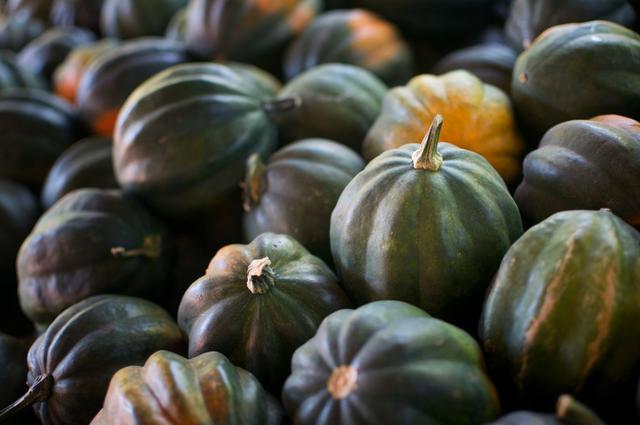
Acorn squash has a unique taste and texture that sets it apart from other members of the squash family. Compared to butternut squash, acorn squash has a milder flavor and a slightly more fibrous texture. Its sweet and nutty flavor is complemented by the watery character of its flesh.
The taste of acorn squash is not overpowering, making it versatile in various recipes. It can be used as a substitute for other types of squash like Hubbard or butternut in most dishes. Pumpkin is also a viable alternative.
In terms of texture, acorn squash is less smooth compared to butternut squash. It has a slightly firmer and denser flesh, which adds a pleasant bite to dishes. This texture holds up well when roasted or grilled, allowing it to retain its shape and structure.
Overall, the taste and texture of acorn squash make it an excellent choice for fall and winter cooking. Its mild flavor pairs well with different spices and ingredients, allowing for endless culinary possibilities. Whether roasted in the oven, cooked in the microwave, or grilled on the barbecue, acorn squash adds a delightful touch to any meal.
Nutritional Benefits:
– One cup of cubed raw acorn squash contains only about 56 calories.
– It provides more than half of the daily recommended intake of vitamin A.
– It offers about a quarter of the recommended daily allowance of fiber and vitamin C.
– Acorn squash is nutrient-dense and rich in various nutrients that help strengthen bones, aid digestion, ward off cataracts, and regulate blood sugar levels.
When choosing an acorn squash, look for one that is dark green with a dried stem if possible. The skin should be firm without any mold or blemishes. If buying from a grocery store where the stem is not present, gently test the firmness of the squash with a fingernail.
To store acorn squash, keep it at room temperature for one to two months. If unsure if it has gone bad, slice it in two and check for slimy, gray seeds. Once cut, any uncooked portion can be tightly covered with plastic wrap and refrigerated for up to four days. Alternatively, you can cook the squash and freeze it for up to a year.
In summary, acorn squash offers a mild and nutty flavor with a slightly fibrous texture. It is packed with essential nutrients and can be prepared in various ways. Whether roasted in the oven, cooked in the microwave, or grilled on the barbecue, acorn squash adds a delicious touch to your meals throughout the year.
Unlocking the Flavor Secrets of Acorn Squash
Acorn squash may have a milder taste compared to other members of the squash family, but it is still packed with flavor. Its sweet and nutty profile is complemented by its slightly fibrous texture. This combination makes acorn squash a versatile ingredient that can be used in various recipes. Whether you’re roasting, baking, microwaving, or grilling it, acorn squash adds a delicious and unique taste to your dishes.
How to Enhance the Flavor of Acorn Squash:
1. Roasting: Roasting acorn squash in the oven brings out its natural sweetness and intensifies its flavor. Cut the squash in half, remove the seeds and stringy bits, then drizzle it with oil and season with salt and pepper. You can also add spices like cinnamon or nutmeg for an extra kick of flavor. Roast it at 400 degrees F (205 degrees C) until tender and caramelized.
2. Baking: Baking acorn squash allows you to infuse it with different flavors. One popular technique is scoring the flesh of the squash before baking and then applying a glaze or marinade. A common choice is an orange-maple glaze that adds a tangy yet sweet taste to the dish.
3. Microwaving: Microwaving acorn squash is a quick and convenient method that still yields great results. Simply cut the squash in half, place it cut-side down in a microwave-safe dish with an inch of water, and cook on high for about 10 minutes or until tender. The microwave preserves the natural flavors of the squash while providing a soft and creamy texture.
4. Grilling: Grilling acorn squash gives it a smoky flavor that pairs well with savory dishes. Start by cutting the squash in half and removing the seeds. Wrap each half tightly with tin foil to create a pocket, then grill over low flames until tender. The heat from the grill adds depth to the squash’s flavor and creates a delicious charred exterior.
Pairing Acorn Squash with Other Flavors:
– Sweet: Acorn squash’s natural sweetness can be enhanced by adding ingredients like brown sugar, maple syrup, honey, or cinnamon. These flavors complement the squash’s nutty taste and create a comforting and indulgent dish.
– Savory: If you prefer a more savory profile, try pairing acorn squash with herbs like rosemary, thyme, or sage. You can also add garlic, onions, or Parmesan cheese for an extra layer of flavor. These combinations balance out the sweetness of the squash and create a satisfying savory dish.
– Spicy: For those who enjoy some heat in their meals, consider adding spices like cayenne pepper, chili powder, or paprika to your acorn squash recipes. The spicy kick complements the natural sweetness of the squash and adds a bold and exciting element to your dish.
By experimenting with different cooking methods and flavor combinations, you can unlock the full potential of acorn squash and create delicious meals that showcase its unique taste.
An Exploration of Acorn Squash’s Mild and Watery Character
Acorn squash is known for its mild flavor and watery texture, which sets it apart from other members of the squash family. Its taste is milder than butternut squash, with a subtle sweetness and nuttiness that is not overpowering. The flesh of acorn squash has a slightly fibrous texture, adding an interesting element to its overall mouthfeel.
One way to enhance the flavor of acorn squash is by roasting it in the oven. This method brings out the natural sweetness of the squash while also allowing some caramelization to occur, resulting in a more complex taste. The watery character of the flesh becomes less pronounced as it cooks, giving the roasted acorn squash a smoother texture.
Another option for cooking acorn squash is to microwave it. This method is quick and convenient, perfect for those times when you need a healthy side dish in a hurry. Microwaving retains more moisture in the flesh, preserving its watery character. However, be careful not to overcook it, as this can make the texture mushy.
Grilling acorn squash adds a smoky flavor to its mild taste. The heat from the grill helps to intensify the flavors while also imparting some charred notes. Wrapping the halves tightly in tin foil ensures that they cook evenly and retain their moisture, preventing them from becoming too dry.
In summary, acorn squash’s mild and watery character makes it versatile in various cooking methods. Whether roasted in the oven, microwaved for convenience, or grilled for added smokiness, acorn squash offers a unique taste experience with its subtle sweetness and nuttiness combined with a slightly fibrous texture.
Comparing Flavors: How Does Acorn Squash Differ from Other Varieties?
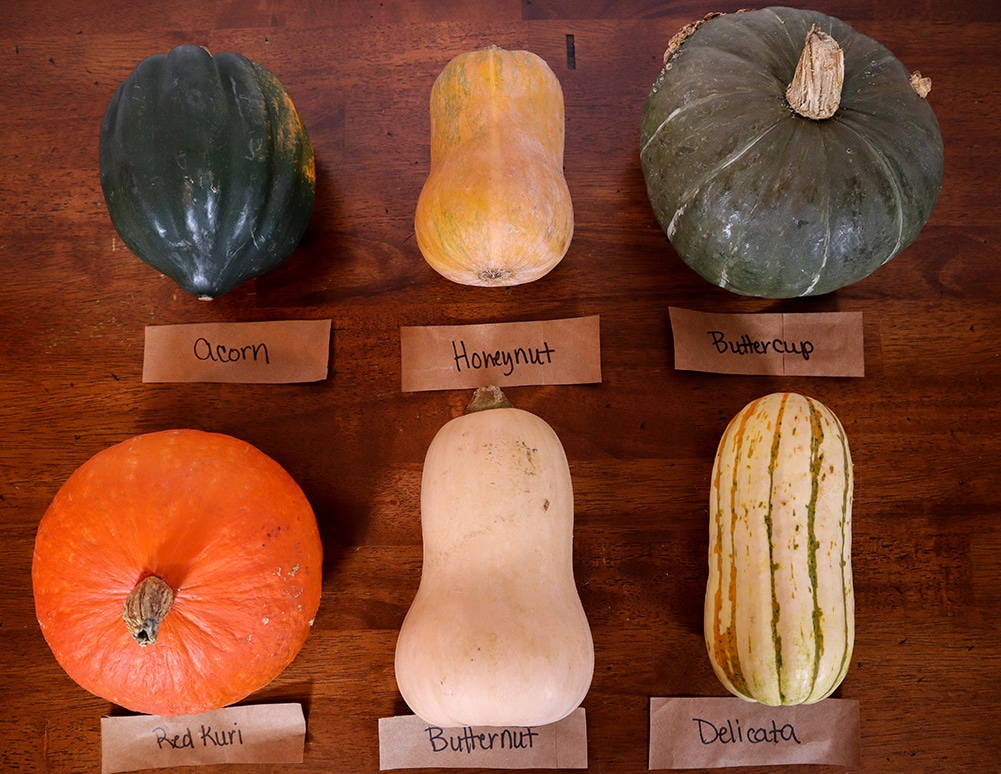
Acorn squash has a milder taste compared to other varieties of squash such as butternut squash. Its flavor is sweet and nutty, but it is slightly muted by the watery texture of its flesh. The fibrous texture of acorn squash also sets it apart from other squashes. While it may not be as creamy as butternut squash, its unique texture adds a pleasant bite to dishes.
When it comes to substituting acorn squash in recipes, other members of the squash family like Hubbard or butternut can be used. These varieties have similar flavors and textures, making them suitable replacements for acorn squash in various dishes. Pumpkin is another possible substitute that can provide a similar taste profile.
Overall, acorn squash offers a distinct flavor experience with its mild sweetness and nuttiness combined with its slightly fibrous texture. It is versatile enough to be used in various recipes and can be easily substituted with other squashes if needed.
Some possible lists related to comparing flavors:
Similarities between Acorn Squash and Butternut Squash:
– Both have a sweet and nutty flavor.
– They are both versatile and can be used in a variety of recipes.
– Both provide nutritional benefits such as vitamin A, fiber, and vitamin C.
Differences between Acorn Squash and Butternut Squash:
– Acorn squash has a milder taste compared to the richer flavor of butternut squash.
– Butternut squash has a creamier texture compared to the slightly more fibrous texture of acorn squash.
– Acorn squash is typically smaller in size compared to butternut squash.
These are just some examples of how you can compare the flavors of acorn squash with other varieties using paragraphs and lists in English language.
In conclusion, acorn squash has a mild and slightly sweet flavor with nutty undertones. Its tender and creamy texture makes it versatile for various culinary applications, such as roasting, baking, or stuffing. Whether prepared savory or sweet, this winter squash is a delicious addition to any meal.
Learn More About Grilling
If you want to learn more about grilling, check out these other helpful resources!



